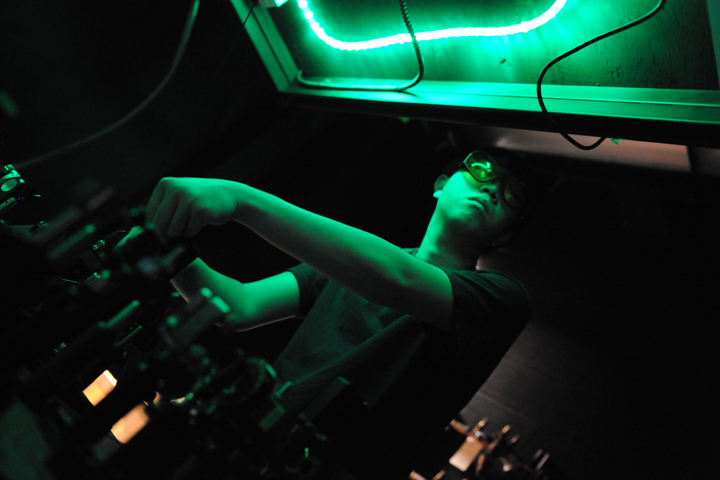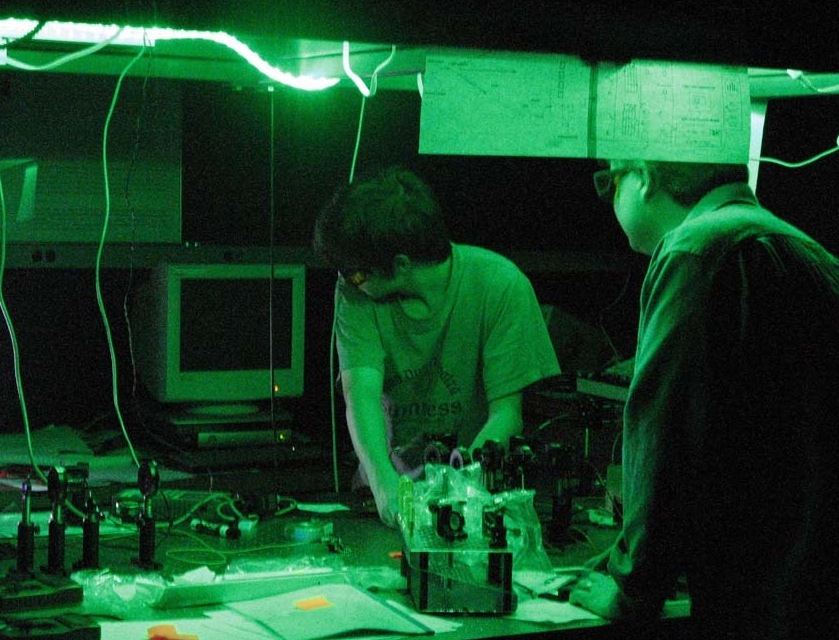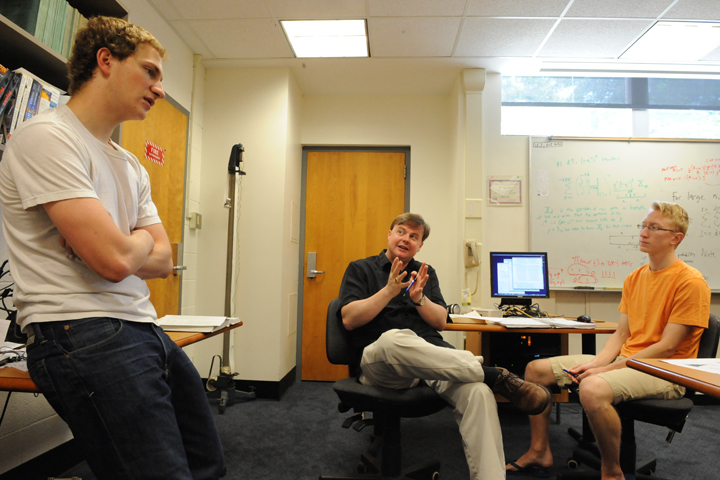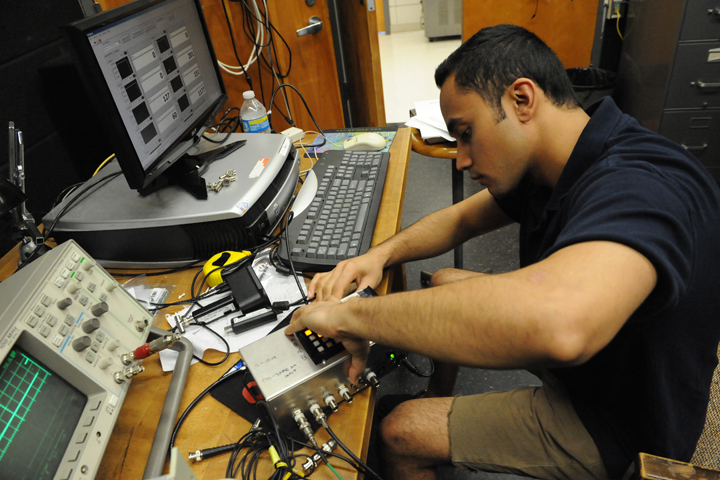I am interested in testing the laws of quantum mechanics with light. The quantum-mechanical nature of reality is not obvious in most physical systems, but over the past few decades, a process known as spontaneous parametric down-conversion has made it remarkably easy to observe the nonclassical behavior of quantum particles. In this process, an ultraviolet “pump” laser emits a photon that enters a nonlinear medium, where it is annihilated and produces a pair of lower-energy photons. These photons can exhibit quantum interference and/or entanglement, and can also implement protocols such as quantum cryptography or quantum logic gates, which cannot be achieved with classical systems.
Inhibited spontaneous emission in a time-dependent cavity
Excited atoms normally give up their excess energy in the form of light, as spontaneous emission. However, this emission can be inhibited if the atom is placed at a node of the allowed standing-wave modes between two mirrors. In this "inhibited" state, the atom is not allowed to radiate a photon. But then how does it interact with the cavity in the first place? The answer to this question relies on the photon’s uniquely quantum-mechanical ability to be both "emitted and not emitted" by the atom, effectively entangling the state of the atom with that of the radiation field in the cavity. To see that there is actually a photon amplitude in the cavity at all times, one must take down the cavity wall and immediately look for a photon to be detected, in a time shorter than the round-trip time of light in the cavity. This requires a fast optical switch, a long cavity, and a spontaneous emitter whose radiation modes can be controlled more precisely than those of an atom – namely, the parametric downconverter. If this experiment is successful, it will provide direct experimental evidence for light radiated into a cavity during inhibited spontaneous emission.
This material is based upon work supported by the National Science Foundation under Grant No. 0855799. Any opinions, findings and conclusions or recommendations expressed in this material are those of the author and do not necessarily reflect the views of the National Science Foundation (NSF).


Tests of quantum randomness in single-photon polarization measurements
According to quantum mechanics, many physical processes, such as the decay of radioactive nuclei, occur at random: even with full knowledge of the system and its history, the next event remains unpredictable. Physical processes, therefore, are a source of "pure" random numbers that should pass any numerical tests for randomness. In the above photo, Matt Bermudez works to collect a sample of 17 million polarization measurements on single photons. Each photon was prepared in a quantum superposition state of Horizontal (H) and Vertical (V) polarization, and then measured, with a polarizer and detectors, to be either H- or V-polarized. The sequence of H-V outcomes, which is predicted to be random by quantum mechanics, were then subjected to fifteen tests developed at the National Institute of Standards and Technology (NIST) for computer-based random-number generators. We are now working to develop new tests that go beyond the NIST tests in searching for correlations, and to apply them to new sequences of polarization measurements.


Matt Bermudez (left), Trinity class of 2009 adjusts the optics that measure the
polarizations of single photons (Photo: Christoph Geiss).
Jared Zimmerman (left), Trinity class of 2013, and Adam Katcher (right), Trinity class of 2012, are developing new tests of quantum randomness. (Photo: Nick Lacy / Trinity College)
Coincidence-counting electronics
An important tool for the above experiments, and many others in quantum optics, is coincidence counting -- the simultaneous detection of two or more photons at different detectors. We are developing new electronic circuits for coincidence counting that are inexpensive, fast, easy to use, and suitable for both research and educational laboratories. The schematics and driver software for these electronics are freely available here.

